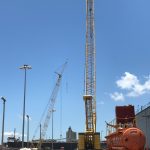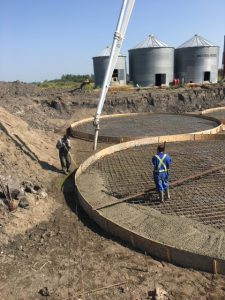Categories
- Services
- Heavy Equipment Repair Services in Tampa FL
- Boom Repair
- Scissor Lift Repair
- Excavator Repair
- Backhoe Repair
- Skid Steer Repair
- Telescoping Repair
- Lull Repair
- JLG Repair
- Earth Movers
- R.O.P.S. Repair
- Tower Crane Repair
- Boom Lift Repair
- Rental Companies
- Mobile services
- Mechanical Service
- Refurb Services
- HD Trailer Repair
- Painting Services
- Hydraulic Repairs
- Structural Welding Repairs
- Brands We Service
- Online Store
- Parts
- Insurance
- Certifications
- Projects
- News
- About Us
- Contact Us
Structural Repair Verification from an Engineer’s Perspective

Protecting yourself when inspecting a machine with structural repairs.
Crane surveyors are often faced with the problem of determining the sufficiency of structural repairs. Some jurisdictions require that the surveyor declare that the crane is in “safe working condition” as a requirement for acceptance or certification. In addition to the regulatory requirements, every surveyor is faced with the challenge of risk management. In practical terms, the surveyor must consider and avoid the risk of accepting a structural repair the sufficiency of
which cannot be determined by visible inspection or load testing as is offered by ASME B30 standards.
The first thing to consider is who authorized the repair. The surveyor should require a copy of written directions by the authority that is qualified to allow and/or define the repair method. Some jurisdictions require that the repairs be authorized by the crane manufacturer or a registered engineer. The surveyor is left with the decision as to the validity of the authorizing agent.
The surveyor should be satisfied that the material used in the repair is the same as or equivalent to the original material. The material or the specification for the material may be supplied by the original equipment manufacturer. Alternatively, the proper material can be determined by a laboratory analysis of the parent material together with a certified test report with a mill test report from the repair material supplier.
If welding is part of the repair, the welding process should be prequalified or the welding process should be certified in accordance with AWS D1.1 standard. The joint design should be in accordance with the AWS 14.3 standard and the instructions of the authorizing authority. The welding must be done by a welder certified for the process, material, and welding position(s) used. The electrode material must be compatible with the parent material. The welds should be done in accordance with AWS D14.3 and be inspected in accordance with AWS D1.1 standard.
In general, the surveyor should require sufficient documentation to verify that the repair has been completed in accordance with the instructions of the authorizing agent. This assurance should include a parent material specification, a material certification for the repair material, a welding procedure certification (if needed), a welder certification document, and a Non-Destructive Evaluation report. The surveyor should load test the element(s) repaired and provide a document to attest to the satisfactory test results.
In summary, the crane surveyor should require sufficient documentation for his files to verify that the repair has been done in compliance with the instructions of the authorizing agency.
John W. Davis
Davis Engineering
Fresno, CA
johncran@sbcglobal.net
Posted in Uncategorized
Crane Restoration in the News Again

Crane restoration
We were interviewed for a recent article by American Cranes & Transport editor D. Ann Shiffler entitled, “Careful consideration required for crane restoration”.
Along with Dave Wood, President, Wheco, Inc. Richland, WA and Frank Arthur, branch manager, H & E Equipment Services, Belle Chasse, LA we discuss some specifics on when is the best time to consider crane restoration, what factors can lead an owner to choose this route and what to look for in a service partner while in the decision-making process.
Shiffler also asks about the history of both Certified Boom Repair and Wheco so you’ll see some answers to that. People always like to talk about how their company’s started and we’re no different.
Read the article here and let us know if you have any insight to add.






